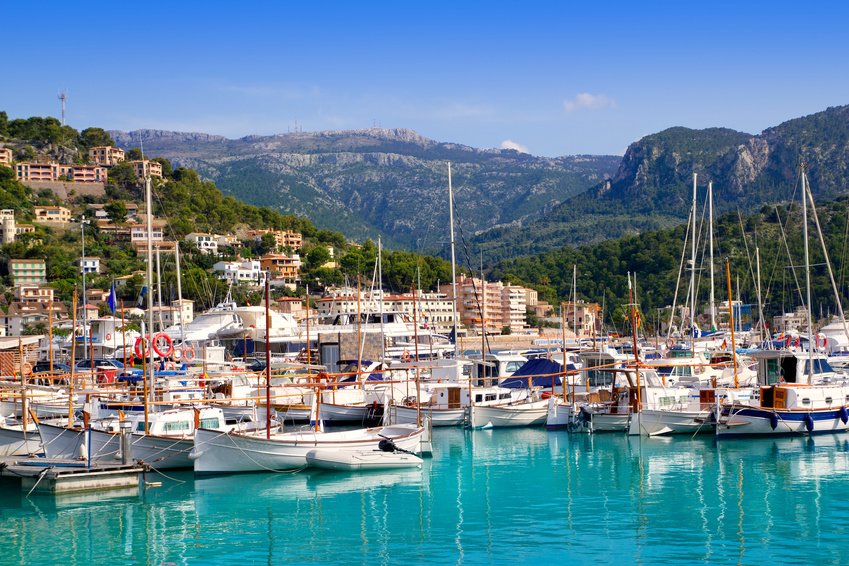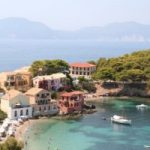The largest of the Balearic Islands, Majorca is the perfect holiday destination for millions of tourists a year. There is absolutely nothing not to like about Majorca where bustling coastal resorts give way to tiny villages and all within easy travelling distance of some of the most glorious stretches of white sand you will find anywhere. The beaches are a massive draw but the interior also has much to offer, especially in autumn and winter after the crowds have gone and the cooler temperatures are a lot more suited to the many outdoor activities on offer.
Surprises
There are various ways of getting round the island; tours, hire car, the public transport system or even on horseback. Two modes of transport which allow you the luxury of soaking up the very essence of Majorca are on foot or riding a bike, and if these are your holiday transport preferences then you should head to the Serra de Tramuntana. This stunning mountain range, which runs down the west side of Majorca, is a designated World Heritage Site, in recognition of the quite extraordinary techniques which have been used over the centuries in the development of agriculture on the steep slopes.
Wine aficionados should head to the centre of Majorca where there are many wineries producing local wines which are created using traditional methods of fermentation. Many do not associate the Balearics with the range of stunning wines that are produced in Spain with the majority of vineyards and wineries being on the mainland, but Majorcan wine is something very special.
Even though you may have been to Majorca several times there are still gems to discover. One of these is the outstanding selection of rural hotels which offer a luxurious base for those who want to spend a week or two exploring the lush landscapes that make up the interior countryside or travel down to the coast for the day rather than being there for the whole duration of the trip.
Best time to go
Everyone is probably aware that the main season for beach holidays gets going properly in May and winds down in mid-end of October. This doesn’t mean you should only visit during this window however as the island is particularly beautiful during early spring with its abundance of almond blossom. There are around 4m almond trees across the plains and in the valleys of Majorca and they make a spectacular vista when in full bloom from late January through until the end of February.
Outside of the peak months of July and August the Balearic isles are excellent for activity holidays, ranging from easy to challenging, and there is much to see if you are a lover of birds and/or plants. As this is traditionally classed as low season, with both flights and accommodation at their cheapest, it is not usually warm enough for lounging about on the beach, but the temperature is optimum for exploring under a comfortable sun.
General advice for travelling to Majorca
There is no shortage of flights and holiday packages to the island available from just about every reasonably sized airport in the UK. For the best deals check out the sites that offer quotes from multiple companies or use a specialist site.
Run off a couple of photocopies of both your passport and your European health-card as you will be asked for them if you need any medical treatment. By law you should also carry your passport with you and you may have to produce it if you want to make a credit or debit card payment.
If you are driving in Majorca you need to have 2 reflective bibs, 2 warning triangles, spare headlight bulbs and a spare tyre at all times. Children who are under 12 can only sit in the front if there are suitable and approved seatbelts in place.
It isn’t unusual to share a table in a Spanish restaurant, but bear in mind the Spanish eat a lot later and by avoiding the following times you have more chance of your own table. Lunch starts at 2pm until “after siesta-time” and the earliest an evening meal would be eaten by the Spanish and other Europeans is 9pm, but most eat at 10pm or later. Unlike the UK, most bars in Majorca don’t object to you nipping it to use their toilet, look for the sign for ‘los servicios’.
Even though the Spanish like a drink, it’s rare to see them rolling drunk in public, and they frown upon the British public drinking habits displayed in other resort areas. As far as tipping is concerned, locals leave very small tips, if they tip at all. If you leave a 10% tip after a meal it is considered very generous and 5% is what bars and restaurants tend to expect from foreign visitors. If you are staying in an apartment or hotel where meals are not provided, you will save a small fortune by eating out at local bars rather than the in-house restaurants.








Leave a Reply